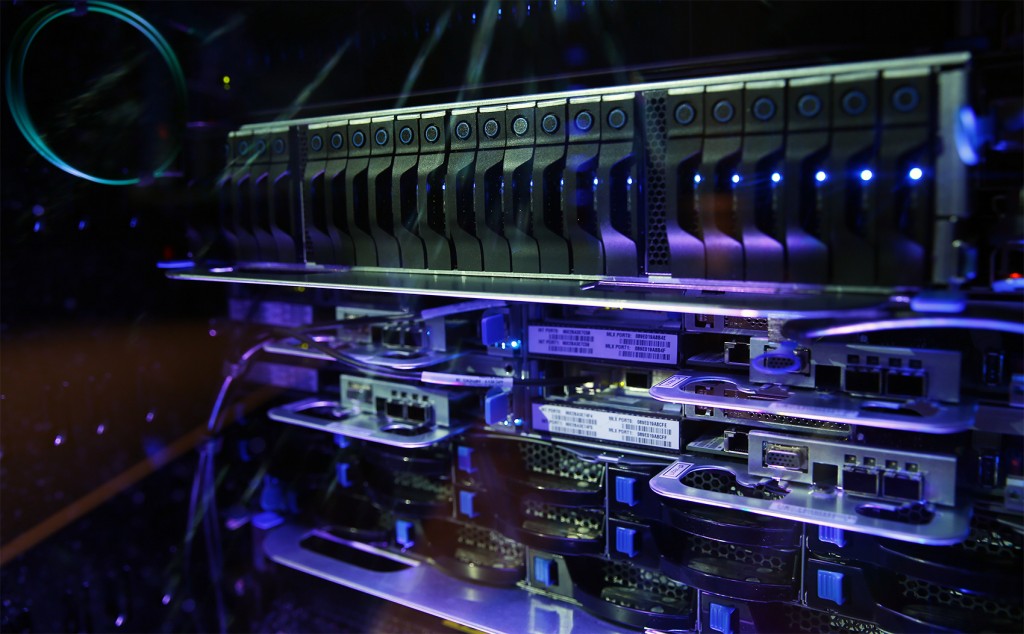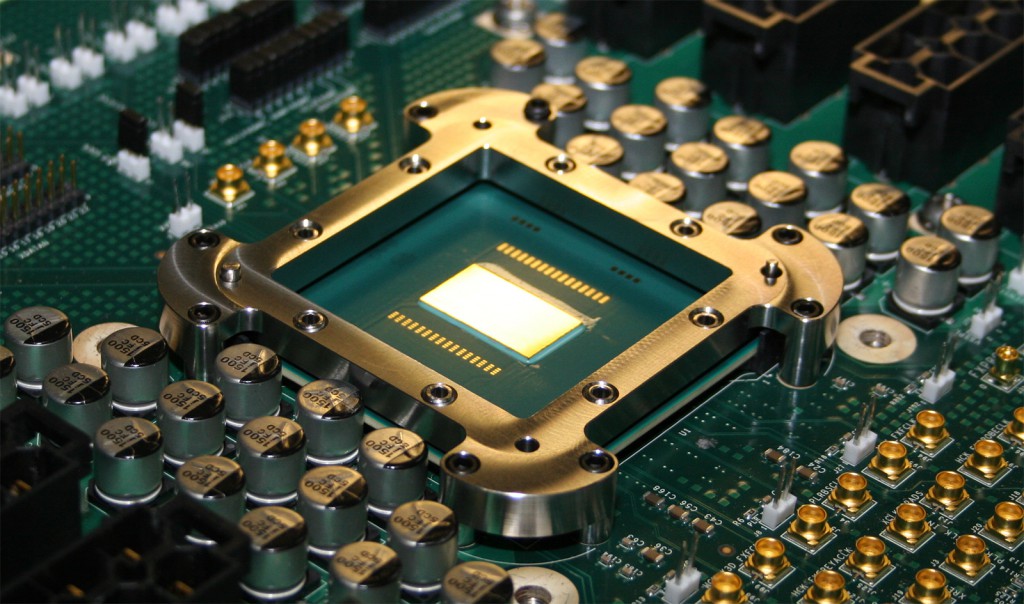Amazon Web Services, a service arm of Amazon and one of the world’s largest providers of cloud services, recently established silicon optimization engineering team (SOET) with the aim to create custom server platforms and microprocessors. The company has already begun to hire specialists to develop highly-tailored server platforms.
Nowadays companies like Amazon, Google, Facebook and Microsoft develop and build custom servers in-house based largely on off-the-shelf components. Microprocessor developers AMD and Intel offer those large companies special versions of microprocessors specifically tailored for their needs. Various other hardware companies also offer solutions specifically designed for hyper-scale datacentres. But, apparently, this is not enough.

A custom-built experimental server based on Intel Atom system-on-chips
As datacentres grow even larger, they require even more tailored hardware, which will involve completely personalized chips. Andrew Feldman, general manager of SeaMicro and corporate vice president at AMD, predicted last year that the second wave of made-to-order chips for hyper-scale datacentres would not only include some tailoring of microprocessors and their input/output (I/O) interfaces, but would involve custom-made chips with individually designed I/O, special-purpose processing engines/accelerators and other extras.
While AMD and Intel can offer highly-customised chips, they naturally want to earn their regular 35% – 50% gross-margin on such microprocessors, which is a lot of money, given the volumes of Amazon’s or Facebook’s purchases. As a result, in a bid to create fully-customized solutions quickly and cost-efficiently, owners of hyper-scale datacentres are looking forward to create their own processors that fit their needs.
Amazon Web Services recently established a silicon optimization engineering team that is currently hiring specialists in the fields of “server platform processor architecture”, “micro-architecture performance and workload characterization” and other. AWS has already hired at least six engineers with both silicon design, fabric and board design experience who used to work at Calxeda, an ARM-based server startup that went out of business last year, including the former chief technology officer, reports GigaOM web-site. There company is currently looking for more hardware engineers (including such exotic specialists as CPU architects/micro-architecture architects), which clearly points to the fact that AWS is set to design its own highly-integrated system-on-chips (SoCs) for servers.
An experimental Intel chip
Amazon Web Services is expected to license ARM’s 64-bit architecture and either build Cortex general-purpose cores into custom SoCs or even design custom ARMv8-compatible cores for their processors. While it sounds like it is relatively easy to license ARM cores, creation of a complex system-on-chip is a tricky and expensive process. Design of custom ARM-compatible cores takes a long time and costs loads of money. If AWS needs higher performance than ARMv8 can provide, then it can license IBM Power8 architecture. However, designing around Power8 will be even more difficult.
At present it is unknown whether Amazon plans to build processors that could compete against Intel or AMD offerings in terms of pure performance. Theoretically, chips that are specifically tailored for certain tasks and which perform those tasks quicker than Intel Xeon or AMD Opteron offerings could be created. Such SoCs could be powered by ARMv8 architecture cores (or IBM Power8 cores), special-purpose accelerators and other licensable IP [intellectual property] like network processors, memory controllers and so on. However, it is very expensive and risky.
“It is a major investment in the hundreds of millions of dollars to build your own custom core but if you buy hardware like Amazon does, and if you are truly successful at matching your workloads to your processors, then it could pay off,” said Patrick Moorhead, president and principal analyst at Moor Insights and Strategy. “But it’s very risky.”
It takes around a year to develop a custom system-on-chip featuring pre-designed IP. In case AWS wants to create its own ARMv8 micro-architecture, special-purpose accelerators and other ingredients, then it will take years before the actual solutions will be ready.
Amazon did not comment on the news-story.
Discuss on our Facebook page, HERE.
KitGuru Says: It will be interesting to see whether eventually (or maybe initially?) Amazon plans to use AWS’s chip expertise to build tailored chips for its consumer electronics devices as well. Theoretically it could develop custom SoCs featuring ARM Cortex cores, PowerVR graphics engines and some proprietary IP in order to differentiate its tablets, smartphones and set-top-boxes from those offered by its rivals. However, it looks like serious market players (like Apple) tend to design their own custom processing cores (e.g., Swift, Cyclone) and special-purpose hardware to get maximum performance at lowest cost.
 KitGuru KitGuru.net – Tech News | Hardware News | Hardware Reviews | IOS | Mobile | Gaming | Graphics Cards
KitGuru KitGuru.net – Tech News | Hardware News | Hardware Reviews | IOS | Mobile | Gaming | Graphics Cards


